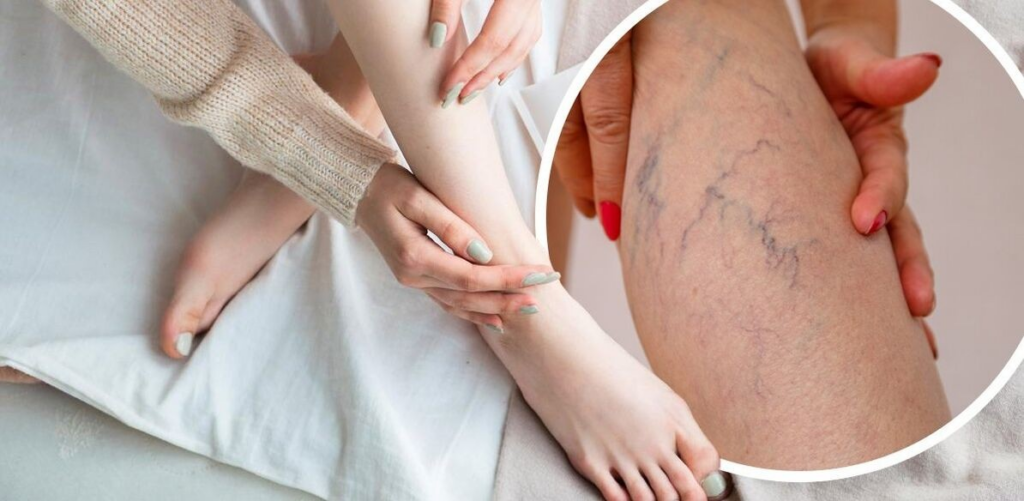The cost of varicose vein removal in the Philippines can vary depending on the type of treatment and the severity of the condition. On average, the price for varicose vein removal procedures such as sclerotherapy or laser therapy can range from PHP 10,000 to PHP 50,000 per session. Surgical procedures like vein stripping or endogenous laser treatment may cost between PHP 50,000 and PHP 150,000.
It is important to consult with a healthcare provider to determine the best treatment option for your specific needs and to get an accurate cost estimate. Additionally, some health insurance plans may cover a portion of the cost of varicose vein removal, so it is advisable to check with your provider for coverage details.
Multiple sessions could mean several thousand dollars for more severe cases. Some of the more advanced procedures include Varithena foam injection, which may range from $2000 to $3000 and ClosureFast Radiofrequency Ablation (RFA), which may cost $3000 to $5000. Costs vary depending on the number and size of veins to be treated.

How Much Is Varicose Vein Removal in The Philippines
Skirts and shorts not only allow us to move freely, but they help us deal with the country’s stifling heat. But it’s the kind of fashion you avoid when you have legs covered in green, twisted, swollen veins. So, how do you treat varicose veins?
“Varicose veins are enlarged, sort of swollen and twisted large veins commonly found on the legs. They are usually visible from just under the skin as those greenish snake-like cords that sometimes have bumps,” says Zaza Limcangco M.D., board-certified dermatologist of the Philippine Dermatological Society.
Veins carry blood from different parts of the body to the heart. When these veins weaken, they can accumulate blood and lead to congestion and clogging, says Regina Grace Buzon-Llorin M.D., associate physician at the Belo Medical Group. “The veins, then, become abnormally enlarged, leading to the formation of varicose veins or spider veins.”
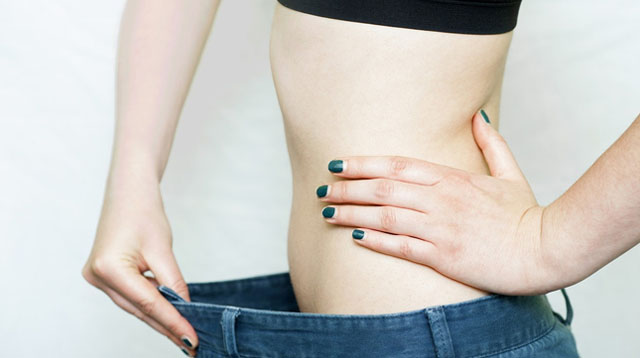
If you’re looking into getting treatment for your varicose veins, Dr. Limcangco says it is important to undergo a Venous Duplex Scan (basically an ultrasound to see your veins) before anything else. “You can visualize which veins are indeed damaged and work on a treatment plan from there,” she says.
Once you and your doctor have a clearer picture of the state of your veins, you can then decide on a procedure. Here are options your doctor will likely discuss with you.
1. Sclerotherapy
Estimated cost: P4,000 a session
Sclerotherapy is the most common procedure for varicose veins. “It involves injecting a solution into the vein, causing the walls to swell, stick together, and then seal shut,” explains Dr. Buzon-Llorin. “This stops the blood flow and the vein becomes a scar tissue. The vein should eventually fade. Sclerotherapy is very effective if done correctly, and patients can experience about fifty percent to ninety percent improvement. It does not require anesthesia, and can be done in the doctor’s office.”
“You will feel a very bad cramping in your leg as the solution enters the veins. Then you have to wear medical grade support tights for two weeks to make sure that the solution and veins stay compressed and in place,” says Janet* who has had the treatment in the past. Adds Dr. Limcangco, “Sclerotherapy can require multiple injections. To reduce the discomfort, I ask the patient to take a pain reliever about an hour prior, and I use the smallest needle available, a lot smaller than those used for pedia patients.”
2. Foam Sclerotherapy
Estimated cost: P4,000 a session
If a patient has larger varicose veins that are not responsive to conventional sclerotherapy, this is the method Dr. Buzon Llorin suggests. “It is a type of sclerotherapythat involves creating a foam out of small volumes of the sclerosing solution, rapidly mixed with a small amount of air,” she explains. “A greater volume of the foam formed from a smaller amount of sclerosingagent can be injected and this could cause intense spasm of the vein.”
3. Radiofrequency Occlusion
Estimated cost: P70,000 to P80,000
Jeffrey L. Chua M.D., endovascular surgeon at the Makati Medical Center, explains that during a radiofrequency (RF) occlusion procedure, “the saphenous vein is injected and a catheter is inserted in the vein. Once the catheter is inside, the vein is burned using radio frequency energy.” A special catheter is used, and this “catheter creates energy once attached to a machine.” The machine has a timer, which makes it more exact. With RF, the patient does not need to be confined in the hospital. She only needs to be mildly sedated, and she doesn’t experience scarring or much pain.
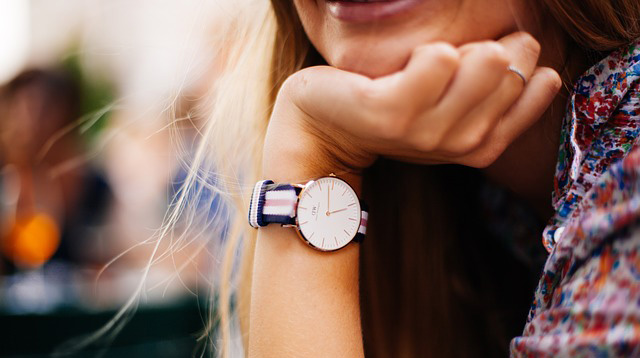
4. Endovenous Laser Treatment
Estimated cost: P70,000 to P80,000
Dr. Chua says this treatment is “the same as RF, and the energy the machine produces is the same.” However, the laser treatment depends more on the steadiness of a doctor’s hand, which is why he says he prefers RF to the laser procedure.
5. Electrodesiccation
Estimated cost: price unavailable
This treatment is similar to sclerotherapy, except that the veins are sealed off with an electrical current instead of the injected solution. Dr. Buzon-Llorin says this treatment may leave scars.
6. Surgical Ligation and Stripping
Estimated cost: P60,000 to P70,000
In this procedure, Dr. Buzon-Llorin says, “Veins are tied shut and completely removed from the leg. Since the deeper veins are responsible for the circulation of the larger volumes of blood, removing varicose veins, which are more superficial, will not affect blood circulation. Surgery requires either local or general anesthesia and must be done in an operating room on an outpatient basis.”
Dr. Chua explains the procedure further: “The incisions are made in the groin area and below the knee. The long saphenous vein, the main cause of the varicosities, is removed. This needs to be done in the operating room and the patient is given spinal anesthesia or a nerve block. The patient is admitted for at least a day or two.” Recovery might take a while because your body will feel quite sore and tender.
Dr. Limcangco cautions, “Vein replacement or vein stripping is probably the last treatment of choice I would recommend. With so many minimally invasive treatments available now, I would only recommend it when all others have failed, or if the duplex scan shows that this would be the best treatment for the patient. But, of course, with this procedure, success rate is very good.”
What other parents are reading

7. Ambulatory Phlebectomy
Estimated cost: P10,000 to P15,000
A special light source is used to locate the veins in this treatment. Says Dr. Buzon-Llorin, “Tiny incisions are made in the vein, and then with surgical hooks, the vein is pulled out of the leg. This surgery requires local or regional anesthesia. The vein usually is removed in one treatment. The most common side effect is slight bruising. Compared to traditional surgery, ambulatory phlebectomy allows the removal of very large varicose veins, leaving only small scars. Patients can return to normal activity the day after treatment.”
However, Dr. Chua says that with this procedure, “the main problem or cause is not fixed. We do it if the patient doesn’t want major surgery.” He usually recommends this procedure after a patient has already undergone stripping and has developed new veins.
8. Mechanical Chemical Ablasion or MOCA
Estimated cost: P50,000 to P60,000
The principle behind this treatment, says Dr. Chua, is similar to sclerotherapy. “But the machine has a device that will create foam and destroy the vein. It irritates the vein and destroys the intima of the vein, or the lining, so that the foam can attach to the vein, better for it to close.”
Varicose Veins Treatment Clinic Near Me
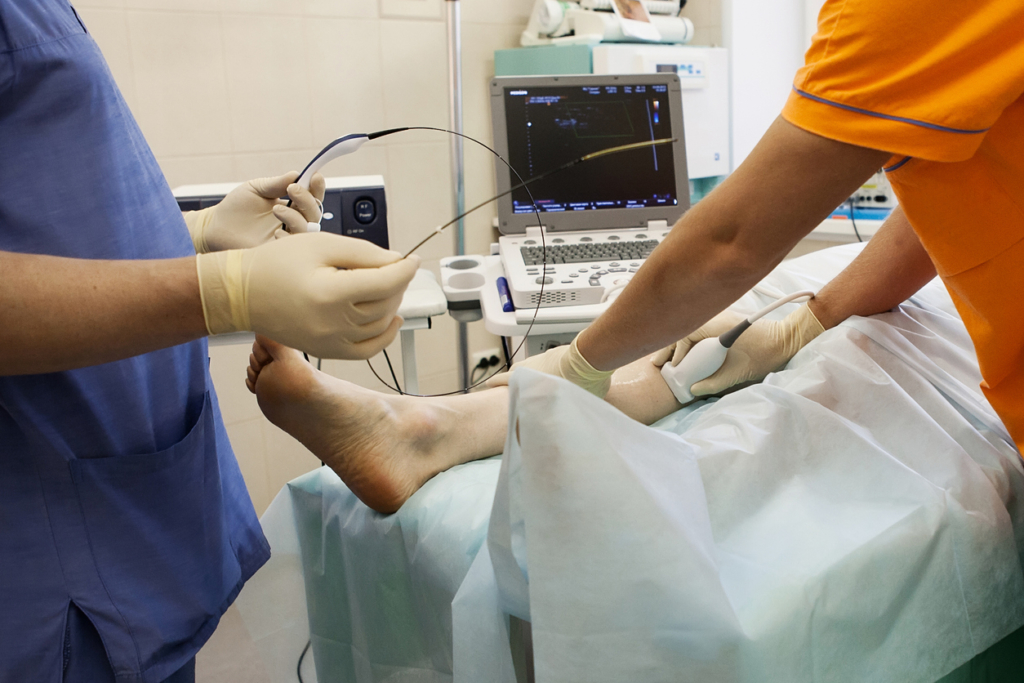
Regardless of the time of year, you want your legs to look & feel their best. But if you have varicose veins, that luxury may feel out of your reach.
Are you one of the 25 million U.S. adults with this condition? You’re not alone. It impacts around 33% of women and 17% of men. Like you, many of these individuals are not only facing the appearance of veins through the skin, but often ropy, raised areas, throbbing, and pain.
If you’re ready to eliminate varicose veins, you may be wondering: what is the cost of varicose vein treatment without insurance?
Cost of Varicose Veins Treatment
Like most procedures, many factors contribute to the price, but that doesn’t mean you can’t begin to estimate the expense. Depending on which method your doctor uses, you may incur expenses like:
- Compression stockings
- Aftercare
- Professional fees for the doctor
- General Anesthesia
- Pain killers, if needed, usually for a short time
- Pre-op testing, which may include ultrasound to judge blood flow
- Facility fees
The final cost depends on whether you have coverage that will pay for some or all of the procedures, so it’s vital that you explore all of your options.
Costs If You Have Insurance
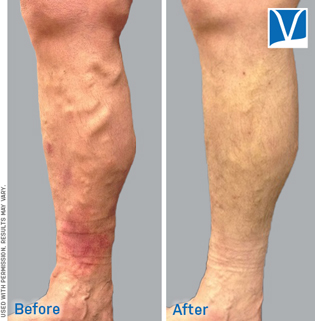
An insurer will usually pay for your initial consultation. Some plans may require a referral from your primary doctor. During that consult, your vein doctor evaluates your condition and takes notes. They may also need to take pictures of your legs to document the severity of the condition.
Your doctor will then send this information securely to your insurer for prior authorization. A medical director at the insurance company reviews the notes from your vein doctor to see if the procedure meets criteria for medically necessary.
Even if it’s partially cosmetic, part of the treatment may still be medical necessity.
An insurer may determine medical necessity if you experience the following as a result of the condition:
- Aching
- Burning
- Changes in skin texture, which indicates lack of blood flow
- Skin ulcers
- Throbbing
- Tired, heavy legs
If you do have medical necessity, you may still have a co-pay, co-insurance, and deductible. Nevertheless, your insurer may have negotiated rates, which impacts how much you pay.
Costs If You Don’t Have Insurance
If you don’t have coverage, then you do not have to meet any medical necessity requirements, but you will be paying for the procedure out-of-pocket. Fortunately, Inovia Vein offers payment plans and self pay discounts to help you cover these expenses.

For spider veins, our staff may recommend sclerotherapy. For people with no coverage, this procedure typically costs around $350-500 per session. This may vary by state and is linked to the cost of living. For example, Oregon generally has a higher cost of living than Mississippi. Therefore, procedures are likely to be more common in cities.
It is not uncommon to need multiple sessions, especially if both legs need to be treated. Your provider can estimate the number of sessions you need during your consultation, so you have no surprises. Multiple sessions could mean several thousand dollars for more severe cases.
Some of the more advanced procedures include Varithena foam injection, which may range from $2000 to $3000 and a ClosureFast Radiofrequency Ablation (RFA), which may cost $3000 to $5000. Costs vary depending on the number and size of veins to be treated. After a vein evaluation, we can help you by providing a detailed estimate of the costs in advance of treatment.
How We Can Help With Varicose Vein Treatments
Here at Inovia, we specialize in varicose veins and offer several state-of-the-art, minimally-invasive options to meet your unique needs. That means less down-time and better results.
You may need Closurefast, which is Radiofrequency Ablation (RFA). In this procedure, we apply gentle and targeted heat to close the large saphenous veins, which are contributing to your varicose veins. Once closed, blood will re-route itself through healthier veins.
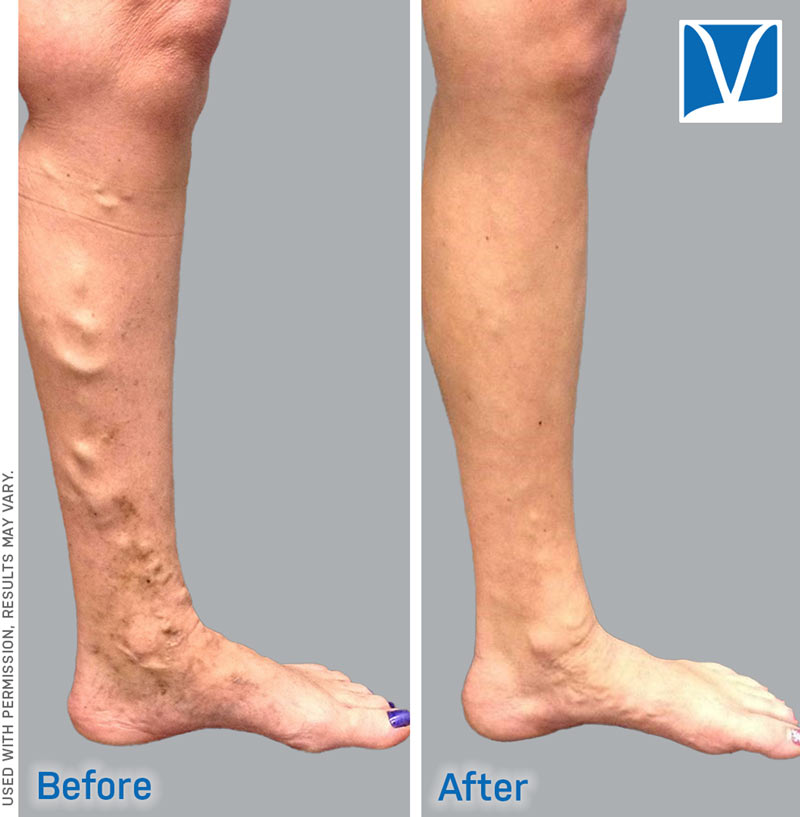
But not all veins will be responsive to the above method, so we have other tools to help you achieve your leg goals.
Varithena vein treatment is an exciting treatment for those with smaller, visible veins. As a form of Sclerotherapy, Varithena involves the use of a foam, which we inject into the smaller, visible veins. This causes the blood to re-route, and then the vein dissolves.
Venaseal vein treatment is one of the latest solutions to become available. It is an ultrasound-guided procedure that involves using medical grade adhesives to cause lower extremity superficial truncal veins to close permanently.
Each of these procedures is office-based and only requires local anesthesia, helping you achieve your leg goals for less cost and with less downtime than other options.
What to Expect After a Vein Procedure
You may experience bruising and swelling for a few days after, so you may need to wear compression stockings around the clock for two days and several hours a day for the next five days.
During this time, you can generally perform daily activities and go to work but will need to avoid anything too strenuous.
Once the initial recovery time has passed, most patients say they experience a reduction or elimination of the leg aching they had before. If you have venous ulcers, these should heal quickly now, and skin color and texture will slowly restore itself.
90% of patients receiving procedures like these maintain their treatment results for at least five years, although genetics and lifestyle factors may extend the results.
Is Varicose Vein Surgery Safe?
- Varicose veins are knobbly, twisted and darkish-blue in appearance, and are most commonly found on people’s legs.
- Varicose veins are caused by faulty valves within the veins that allow blood to pool.
- Treatment options for varicose veins and spider veins include sclerotherapy and surgery.
- Sclerotherapy is the injection of a solution into the vein.
- Most people can expect an improvement in the appearance of treated veins.
Veins carry deoxygenated blood back to our hearts. In our legs, blood is collected in the superficial veins, just below the skin surface, and delivered to deeper veins that run within our calf muscles. The muscular action of our calves helps to pump the blood against the force of gravity towards the heart. One-way valves inside the veins prevent the blood from travelling backwards.
If these valves fail to close properly, blood pools in the superficial veins. Over time, the affected veins distend with blood (become ‘varicose’). Varicose veins are knobbly, twisted and darkish-blue in appearance.
Spider veins are like varicose veins, but smaller and closer to the surface of the skin. They are often red or blue, and can look like tree branches or spider webs. They are mostly found on a person’s legs or face. They may cover a small or large area.
These problem veins can be treated in two main ways. Surgery is usually used on only the larger varicose veins, while sclerotherapy can help with smaller veins.
Treatment of varicose veins and spider veins is not just for cosmetic reasons. Varicose vein disease can cause many health problems, such as blood clots, venous eczema, skin breakdown and ulceration, and, rarely, skin cancers.
Causes of Varicose Veins and Spider Veins
We do not know the causes of varicose veins and spider veins. However, in many cases, they run in families. Women seem to get the problem more often than men. Changes in oestrogen levels in a woman’s blood may have a role in the development of varicose veins. Such hormonal changes occur during puberty, pregnancy, breastfeeding and menopause.
Factors that may increase your risk of developing varicose veins include:
- standing or sitting for long periods
- being immobile for long periods—for example, being confined to bed
- lack of exercise
- obesity.
Symptoms of Varicose Veins
Problems can occur if the faulty valves are located within the veins that go through the calf muscles (deep veins). Associated problems may include:
- Aching in the legs
- Skin rashes, such as eczema
- Capillaries’ eruption is what is causing the brownish “stains” on the skin’s surface.
- Skin ulcers
- Blood clots forming within veins (thrombophlebitis).
Prevention of Varicose Veins and Spider Veins
Some suggestions that may help to prevent varicose and spider veins include:
- Wear support stockings.
- Maintain good weight control.
- Get regular exercise.
- Avoid wearing high heels, as they affect the proper functioning of the larger veins.
Treatment of Varicose Veins and Spider Veins
Sclerotherapy, or the injection of irritating chemicals (sclerosants) into the affected vein, can treat some varicose veins and spider veins. The irritant prompts the vein to spasm and collapse in on itself. In time, the walls of the collapsed vein heal together, and the sealed vein can no longer carry blood.
Leg veins clear up slowly after sclerotherapy and may take up to two to six months to resolve, depending on their size. A compression stocking worn on the leg helps to speed this process. Small veins need compression for around three to six days, while bigger veins need about six weeks.
Sclerotherapy procedure
The actual sclerotherapy procedure takes at least one-and-a-half hours. Afterwards, you need to allow extra time for walking around. The process includes:
- The surgeon marks the site of injection on your legs while you stand.
- The surgeon gives you the injections while you are lying down.
- You put on compression bandages and stockings immediately after the injections. The bandages are meant to be tight.
- You should then walk for about half an hour.
The fine needle used for injecting does not cause much pain, only a mild pinprick sensation. Some people may experience a burning sensation after the injection. This disappears after a few seconds.
Each vein may need several injections, given some weeks apart. Many different veins can be injected in one treatment session. Allergic reactions to the sclerosants are very rare.
If the problem vein isn’t visible to the eye, the surgeon will use an ultrasound machine to help guide the needle (echosclerotherapy). This enables the surgeon to clearly see both normal and abnormal veins underneath the skin. Ultrasound-guided sclerotherapy is best for people with:
- varicose veins
- spider veins that haven’t responded to standard injections
- leg ulcers
- other complications of varicose veins, such as pigmentation and eczema.
After sclerotherapy for varicose or spider veins
To improve blood circulation in the deep veins, it is essential to walk after the treatment. You should wear a compression stocking to reduce the risk of bruising and swelling, and other complications such as inflammation and clots. Regular exercise, weight control and the use of support stockings (if practical) are recommended between treatments and after treatment.
Side effects of sclerotherapy for varicose or spider veins
Some of the possible side effects and complications of sclerotherapy include:
- Bruising – usually at the site of the injection. This will disappear in a few weeks
- Brown lines or spots may appear on the skin at the site of the injected blood vessels. This can occur when blood escapes from the treated vein into the skin. In most cases, this discoloration will disappear in time. In a small number of people (fewer than five per cent), the brown lines may last up to a year or longer. It is beGiven that the iron content of the red blood cells is what causes brown lines, it is best to avoid taking iron supplements while receiving sclerotherapy.herapy can treat stubborn lines or spots, although this treatment cannot be guaranteed to work
- Lumps – may occur in larger injected veins. These are called ‘trapped blood’ and are not dangerous. They will either be removed a few weeks after the injection or will clear by themselves
- Swelling may occur in people who have had large veins treated. To prevent swelling, it is best to wear compression stockings after the treatment
- Matting—a network of fine blood vessels can develop after sclerotherapy. This can be due to a number of reasons including lack of compression, inadequate compression, hormonal supplements, vitamin E supplements, use of anti-bruising creams or creams containing vitamin E, and inadequate treatment of underlying veins. Matting may resolve spontaneously but this may take a year or longer. It can also be treated using special injection techniques
- Ulcers (large sores) – these may form at the site of the injection. They can occur immediately after injection or a few days later. They are rare, but can be painful and usually leave scars after they heal
- Inflammation (phlebitis) and blood clots – can affect the treated large veins
- Allergy to the irritant solution
- Irritation to veins other than the intended varicose vein
- Accidental injection of irritant solution into an artery, causing tissue damage.
Inflammation (phlebitis) and blood clots can occur after sclerotherapy if:
- no compression has been applied
- the applied compression has not been enough
- you are on the contraceptive pill or hormone replacement therapy
- you have an underlying tendency to clot
- the treatment has been performed just after long-distance travel or a major operation
- the underlying source of leakage in the vein has not been treated adequately
- the inflammation extends to the deep veins, causing deep vein thrombosis (DVT). DVT is a rare but serious complication of sclerotherapy. It can extend to the lungs, causing pulmonary embolism (clots in the lungs) and even death
- it is recommended that women stop all hormonal supplements before sclerotherapy (check with your doctor).
Surgery for Varicose Veins
Major surface veins (long or short saphenous veins) that are varicose are usually treated surgically. Generally, a surgeon makes numerous small incisions (cuts) to reach the vein, rather than one large cut. Depending on the location of the varicose vein, these incisions may, for example, be in the groin or behind the knee.
Surgical techniques include:
- ligation and stripping – the surgeon cuts and ties off the vein (this is called ligation). Stripping the vein involves inserting a slender instrument into the vein through a small incision. The vein is then pulled out through a second incision
- phlebectomy – the surgeon makes small incisions, then removes the veins with a special hook.
Medical Issues Before Varicose Vein Surgery
Doctors use a number of tests to decide which type of surgery is best for you. These tests include a physical examination and an ultrasound scan. You need to discuss a range of issues with your doctor or surgeon, including:
- your medical history, since some pre-existing conditions may influence decisions about surgery and anesthetics
- any medications you take on a regular basis, including over-the-counter preparations
- any bad reactions or side effects you have experienced from any medications
- whether or not you are pregnant. Varicose vein surgery is generally not advised for women during pregnancy.
Immediately After Varicose Vein Surgery
After a varicose vein operation, you can expect:
- firm bandaging on your legs, to reduce bruising
- pain-relieving medication
- being encouraged to walk around
- a hospital stay of one or two days.
Side Effects of Varicose Vein Surgery
Some of the common side effects of varicose vein surgery include:
- swelling, which may take a few weeks to disappear. This is most likely on the feet and ankles
- scarring, although scars tend to be less noticeable than the varicose veins were. The scars fade with time
- brown staining of the skin, although this tends to fade with time
- pain, swelling and bruising in the skin and the calf muscle
- injuries to nerves, causing patches of numbness or ‘pins and needles’. These patches may recover in time (up to two years in some cases) or they may be permanent.
Complications of Varicose Vein Surgery
Varicose vein surgery is considered to be safe, but all surgery has some degree of risk. Possible complications may include:
- infection, particularly if you had skin ulcers
- blood clots forming within deep veins
- bleeding or bruising.
Self-Care at Home After Varicose Vein Surgery
Observe your doctor’s instructions, but here are some general self-care recommendations:
- Allow for one (or perhaps two) weeks off work following surgery. You will need to avoid any hard physical exertions during this time.
- Don’t remove your bandages yourself. Leave bandages for your doctor to remove.
- To keep your bandages dry while showering, wrap your bandaged leg in plastic.
- Take at least a half-hour walk every day.
- Sunburn can make scars look worse. Avoid sun exposure if possible for six months.
- Wear a compression stocking for as long as your doctor advises.
- Avoid long periods of standing, or sitting with your legs crossed.
- You may need support stockings if your legs continue to ache.
Long-Term Outlook After Varicose Vein Surgery
You will need to have a check-up a few weeks after surgery and, again, several months later. About 20 per cent of people who have varicose vein surgery will develop new crops of varicose veins over time.
Other Forms of Treatment for Varicose Veins
Other forms of treatment for varicose veins include:
- Electrical current (electrodessication) seals the veins.
- High-intensity light or lasers can destroy the veins.
Where to Get Help
- Your doctor
- Your surgeon
- Dermatologist
